No Mass-produced BMW EVs Until 2020; Buyers Couldn't Handle the Cost, CEO Says
Luxury automakers aren’t in the business of losing money, and BMW doesn’t want to take a hit just because futurists claim the era of EVs is now. Until it has fifth-generation electric vehicle technology on hand, the German automaker plans to go easy on EV production, CEO Harald Krüger told analysts on Thursday.
While Bimmer’s long-range plans still call for 25 electrified models by 2025, 12 of them fully electric, Krüger said it would be too costly to hit the production throttle at this time. How much cheaper are the products designed around BMW’s fifth-generation technology? The difference (in percentage) amounts “a two-digit number,” the CEO claimed.
The Thin Green Line: 2018 Honda Accord Hybrid Heads to Dealers, Undercuts Nemesis in Price
The epic battle known as Honda Accord vs. Toyota Camry won’t end until we’re all sitting in the backseat of a driverless electric Ford shuttle bus, content in knowing we’re doing the right thing for society. Future cities, man.
Until then, there’s cars to sell, and nothing motivates buyers like price. As re-skinned and improved 2018 Honda Accord Hybrids head to dealer lots, the automaker has clearly staked itself out as the value green buy, slashing $4,505 from the previous model’s entry price. That puts the hybrid’s chief rival in an unenviable position. A base Camry hybrid now retails for considerably more, but, if overall sales numbers tell us anything, Toyota probably won’t break into a sweat after reading this news.
Paranoid of the Government? BMW's Got Your Back
As sometimes happens, there’s a war brewing in the heart of Europe. This one isn’t like the others, though — instead of nation versus nation, it’s a case of lawmakers versus privately owned vehicles, primarily those of the diesel persuasion.
So eager are some city governments to ban the operation of diesel-powered cars and trucks in or near urban centers, BMW Group has taken the unusual step of issuing a promise. In a bid to allay fears of new (or newish) vehicles becoming useless to their owners, the automaker claims it will let German lessees return their diesel vehicles and switch to a gas-powered model.
Don’t worry about the government, BMW wants its customers to know. Just enjoy that compression ignition engine while you can.
Noted Diesel Lover Promises 'Practically' One New EV Per Month
Just a week after claiming diesel technology will “ see a renaissance in the not-too-distant future,” Volkswagen Group CEO Matthias Müller said his company is prepared to bestow “practically one new electric model per month” on a world that’s apparently fallen out of love with diesel.
It’s a jarring change of tone from comments made at the Geneva Motor Show, but Müller’s not talking about next month or next year. Once the company’s MEB platform electric vehicles hit full production, he claims, expect the product floodgates to open. We’ve grown properly cynical about lofty EV promises, as well as the public’s supposed unquenchable desire for said vehicles, but Müller insists it’s the real deal.
Backing up the CEO’s claim, Volkswagen apparently has suppliers lined up to make it happen.
Canada's Largest EV Market Quietly Rolls Back Massive Government Subsidy (Again)
Ontario, that strange land located between Detroit and Buffalo (and elsewhere, too) became the largest Canadian market for electric vehicles in 2017. There was good reason for it, too. Imagine walking into a dealer showroom, eyeballing a flashy luxury car, and suddenly your local political representative rushes in and hands you a check for $14,000, no strings attached.
Thanks, fellow taxpayers!
This subsidy is what buyers of Tesla Model S and X vehicles, retailing for over six figures (Canadian MSRP), enjoyed in Ontario until very recently. It’s important to note, though maybe not to certain folks, that the province holds the world’s largest sub-sovereign debt, most recently tagged at $311 billion, and pays over a billion dollars a month to service the interest on that debt.
Sorry, Ontario Tesla buyers. The party’s over. Again.
2019 Mitsubishi Outlander PHEV: Stealthy Plug-in Due for a Power Boost
Unlike the ad campaign you’ve no doubt seen for the new Eclipse Cross crossover, Mitsubishi’s long-awaited Outlander PHEV plug-in arrived on North American shores with little fanfare. Outlander PHEV sales quietly kicked off in January, years after its overseas debut.
Even though it’s just arrived, news from the Geneva Motor Show tells us there’s changes afoot for Mitsubishi’s sole green model. More grunt is on the way.
Volkswagen CEO Really Wants the Good Old Days Back, Predicts Diesel Resurgence
Despite a multi-billion-dollar emissions scandal, a massive corporate black eye, and all signs pointing towards a future devoid of diesel passenger cars, Volkswagen Group CEO Matthias Müller isn’t willing to let go of the past.
While addressing media at the the Geneva Motor Show, the VW boss — perhaps angered by all the newfangled electric cars in attendance, one of which is a Volkswagen — predicted the public would soon realize the error of its ways and return to the comforting arms of diesel propulsion. There’s a renaissance on the way, he said.
However, the fly in Müller’s soothing ointment appears in the form the The Government and the industry’s (and public’s) inclination to go where the incentives are.
Volkswagen Strips Down Its Vizzion, Promises a Semi-conventional Sedan
Volkswagen’s Vizzion of the future — a fully autonomous concept car with an all-knowing hologram chauffeur and suicide doors — just came back down to Earth. The sedan will now start life as a normal car, albeit one with two electric motors and all-wheel drive.
Positioned as the flagship of Volkswagen’s upcoming line of I.D.-badged electric models, the Vizzion is on track to start production in 2022. With this car, VW gains a lower-priced alternative to vehicles like Tesla’s Model S and Porsche’s Mission E.
Retro Is Your Future: Honda Confirms Production of an EV That's Hard Not to Love
Electric vehicles. Yawn, right? It’s easy to be cynical about the high-flying production promises tossed about by practically every automaker, but if the real-life version of Honda’s Urban EV Concept looks half as quirky as the show car, the big H might have a bonafide green hit on its hands.
As the Geneva Motor Show opens to journalists, Honda has announced a production version of the retro-styled hatchback. It turns out CEO Takahiro Hachigo wasn’t lying when he said the Urban EV wasn’t just auto show eye candy.
Yes, There's a Rotary Engine Coming to a Mazda Vehicle Next Year, but It's Not the Main Event
If you’re prone to daydreaming about slinky roadsters and curvaceous coupes powered by a high-revving rotary engine, this news might disappoint.
Mazda, one of a dwindling handful of automakers not in possession of an electric (or even hybrid) vehicle, plans to change that status next year with the introduction of a small battery-powered car. Coming along for the ride — at least in one variant — is a rotary gas engine designed to go unnoticed by the driver.
Is a Meaner, Greener Ford Focus RS on the Way?
The Dutch seem to think so.
After bowing out of the North American market following a limited-edition run of 2018 models, Ford Focus RS production is expected to wrap up in April. The final versions see a special tune, adding an extra 20 horsepower to the the grippy hatch’s already healthy 350 hp rating. Officially, there’s been no word on a replacement.
Unofficially, how does 400 hp sound?
Pagani Huayra Receives Odd Soft Top Now, Manual Trans Successor Coming in 2025
Italian supercar builder Pagani recently announced a successor to the bonkers Huayra will arrive by 2025 with an manual transmission on offer. There will also be an all-electric hypercar accompanying it. But details are scarce and most people don’t seems to care about EVs unless they’re built in Fremont, California, so we’ll gloss over it for now.
The Huayra successor is said to persist with a twin-turbo engine sourced from Mercedes-AMG. But the unit itself will be entirely new. Company founder Horacio Pagani also said the model will come with a manual option to meet the massive demand from Pagani customers who like to row their own gears. But you’ll have to wait for years before you can bask in its glory — likely from afar, unless you’re incredibly wealthy. Luckily, the manufacturer has an ace up its sleeve to help stave off your hypercar hunger: a collapsible soft top for the roadster version of the Huayra!
2019 Jaguar I-Pace: Crossing Over Into the Electric Market
After two years of playing hard to get, Jaguar has finally revealed the production version of the I-Pace SUV. Actually, “revealed” may not be the best word to use, as it feels like we’ve already seen it.
The model looks so much like the earlier concept vehicle that most people wouldn’t be able to tell the two apart, even if they sat inside them. The only real difference is that the production Jag has a cushier-looking interior and a tad more ground clearance. Other than that, both vehicles are practically indistinguishable — even down to the flush door handles.
Despite the bewildering decision to name its non-electric compact luxury crossover the E-Pace and its larger, battery-driven brother the I-Pace, the automaker doesn’t appear to have done a bad job with either. While the E-Pace caters to those seeking a small-and-fancy “sport utility vehicle,” the I-Pace is for those seeing an alternative to Tesla’s Model X.
Dyson Hoovers Up Talent for Electric Car
Noted dust magnate Sir James Dyson is moving ahead at cyclonic speed with his electric car endeavors, hiring 300 new employees to work on an EV due for launch in 2020.
Apparently seeing a vacuum in the car market, Dyson intends to use its expertise and recent acquisition of a battery company to clean up the world’s air pollution. Plans are moving at such a swift rate that the EV team is moving into a new state-of-the-art 750 acre campus, Dyson’s second R&D campus in Britain.
Cool It With the Names Already: From Volkswagen, a 'Vizzion' of the Future
You probably remember the old Jerry Seinfeld routine about ridiculous car names.
“Integrity? No, Inte-grah.”
In a just world, Volkswagen’s naming policy for its electric concept cars would see the company hauled before the courts on charges of crimes against the English language. However, it’s mainly a free world, and we’ll just have to grin and bear the fact that VW’s latest concept calls itself the I.D. Vizzion — surely the worst name in a line of upcoming cars that started with the I.D. and moved on to the I.D. Crozz and I.D. Buzz.
Occupants of the Vision Vizzion, should it one day become reality, won’t ever use their hands for steering, but they’ll certainly use them to talk to the car.
After Falling Out of Love, Porsche's Diesel Divorce Is Now Complete
It always felt little odd whenever a diesel-powered Cayenne sidled up to you next to a stoplight. A Porsche that builds SUVs, we used to mull, and diesels, no less!
The public’s discomfort with a German sports car maker entering the utility vehicle field is long gone, and we can now say the same for Porsche’s short-lived dalliance with diesels. The automaker has stated it’s pulling its last remaining oil-burning models off the market.
A new Porsche is born, cleaner, but perhaps no purer.
Sheer Magnetism: Toyota's Plan for a Cheaper EV Involves Hard-to-pronounce Words
If buyers really do plan to line up to buy electric vehicles, even before the government forces them to, automakers had best figure out a way to make them affordable not just to buy, but to build.
We all know battery packs are expensive (with ingredients clouded by child labor and environmental issues), but batteries are only part of the equation. While simple in operation, electric motors are nothing like the aluminum or iron affairs under the hood of your dad’s Buick Enclave. There’s a lot of metals you’ve never heard of in a permanent magnet AC motor.
Toyota, which wants to be an electric car bigshot, just figured out a way to make a cheaper motor.
It's No Wonder the Germans (and Brits) Want Electric Flagships
Stately. Elegant. Dignified. Endangered?
This isn’t the first time someone has applied that final descriptor to flagship passenger cars, and with good reason. As SUVs gobble into traditional passenger car market share, sales of even the most prestigious sedans have taken a hit — leaving premium automakers wondering “what’s next?”
Well, more SUVs, for one, but also more electrification. Luxury car buyers have shown themselves to be more receptive to plug-in hybrid or fully electric vehicles, but more importantly, one pesky American automaker — Tesla — is threatening to eat everyone’s lunch.
In Europe, competition between the Old World and Silicon Valley is heating up, and the newcomer is winning the sales race.
I Think I8 Can: Will a Refresh and Extra Range Give BMW's Fading Eco Supercar a Boost?
When it went on sale in the latter part of 2014, BMW’s i8 was something of a sensation, though the enthusiasm had as much to do with the car’s jarring design as its technology. I seem to recall Tom Cruise tooling around Dubai in one, possibly in one of the 87 Mission Impossible films.
Boasting scissor type doors, a plug-in hybrid powertrain, a backseat you’d never want to find yourself in, and a sticker price well north of 100 grand, the i8’s time as a media darling wasn’t long-lived. Like a child’s new toy, interest quickly fell away.
There’s two i8s arriving this spring; one a refreshed coupe, the other offering an al fresco motoring experience, sans backseat. Perhaps more importantly, there’s been an effort to fix a serious deficiency in the i8’s green halo: its incredibly limited electric range. Pricing, now released, shows a considerable markup for the drop-top. Can a double-duty lineup, beefed-up eco credentials, and an extra shot of power gild the i8 once again?
Seeking Global Domination, Nissan Hunts New Markets for the Leaf
After becoming something close to a joke over the past couple of years, the once-groundbreaking Nissan Leaf enters 2018 with a new skin, larger battery, and enhanced range. Next year brings an optional battery upgrade, finally giving the five-door EV a range capable of challenging Tesla and General Motors.
Now that it has a competitive vehicle positioned as a value pick in a growing segment, Nissan wants everyone to get a chance to buy one, no matter where they live. It may have shied away from sales targets in the U.S., but Nissan’s not dialing back its global ambitions.
Nice Prius - Now Pay Up: Maine to Green Car Owners
Here at TTAC, we sometimes tap sister publications when a story arouses our interest. This piece, published by Hybrid Cars, details a battle brewing in the rustic state of Maine — one that pits hybrid and electric car owners against a government that says their cars, while good for the environment, aren’t good for road upkeep. As cars become greener and gas tax revenues dwindle, this won’t be the last battle.
A proposed new fee for hybrids and EVs in Maine could be the highest in the country, reducing clean vehicle adoption.
The Maine Department of Transportation wants to add an annual registration fee for hybrids and electric vehicles. $150 for hybrids, and $250 for electric models. The DOT is looking to impose the fee because it says drivers of the more energy efficient vehicles aren’t paying their fair share toward road maintenance.
“The owners of these types of vehicles are paying far less in the gas tax than other vehicle owners and they are using the highway system just like any others,” MDOT Manager of Legislated Services Megan Russo told the Portland Press-Herald. “There has got to be a way to try and capture revenue from those drivers who are using our road system.”
Infiniti Wasn't Fibbing When It Estimated the Revolutionary QX50 Engine's Thirst
One thing is clear — with variable compression comes a newfound lack of thirst.
Infiniti’s previous midsize QX50 crossover didn’t astound in its thrift, garnering 20 miles per gallon on the EPA combined cycle. The move to a new, front-drive platform and addition of a years-in-the-making gasoline engine for 2019 has done wonders for the model’s drinking habit, however, and Infiniti engineers pegged the MPG figures right on the nose.
With the 2019 QX50‘s fuel economy now confirmed by the EPA, it begs the question: just how much of the model’s thriftiness can the variable compression engine take credit for?
Already a Gas Sipper, the 2019 Volkswagen Jetta's Fuel Economy Nears the Head of the Class
The next-generation Jetta, now virtually indistinguishable from other cars when viewed from the side (but unmistakably Volkswagen in its front and rear styling), has plenty of newness on offer, having switched to the company’s MQB platform for the 2019 model year.
Along with a stretch in wheelbase, the new Jetta gains expanded passenger volume and updated features, though not an updated engine. The well-regarded 1.4-liter TSI turbocharged four-cylinder carries over to the seventh-generation model, making 147 horsepower and 184 lb-ft of torque, but a brace of new transmissions arrive to bump the compact sedan’s fuel economy to new (gas-powered) heights.
2018 Hyundai Sonata Hybrid Gets a Possible Mileage Boost; Plug-in Is Just Happy for the New Face
Hold on a minute, you’re thinking — you’re pretty sure you’ve seen this vehicle before. Yes, you have, as the conventional gas-powered 2018 Hyundai Sonata went on sale last summer with a revamped face, tail, and assorted other goodies.
What didn’t launch alongside the refreshed midsize sedan was its hybrid and plug-in hybrid siblings, which soldiered on with a 2017 face until just now. At the Chicago Auto Show Thursday, Hyundai had the distinct pleasure of pulling the wraps off a body already familiar to the buying public, just with different internals. Don’t worry, though, there’s still something new to talk about.
The Original Microcar Is Reborn in China
A Chinese car brand with the same name as a defunct American brand is building the spiritual successor to a famous BMW model that wasn’t really a BMW.
Eagle, a brand of China’s Suzhou Eagle, has begun production of the EG6330K — a model whose name rolls off the tongue like Thunderbird. If the diminutive little car looks familiar, it should.
Feds Ready to Hit Fiat Chrysler With Big Fines: Report
Fiat Chrysler Automobiles might need the 2019 Ram 1500’s newly increased payload capability when it comes time to visit the bank.
As we’ve told you since the scandal broke a year ago, FCA could find itself on the hook for hefty penalties after the Environmental Protection Agency slammed it for failing to declare a bevy of auxiliary emission control devices on its 3.0-liter diesel V6 engine. With the 2017 and 2018 Ram and Jeep EcoDiesel models now in compliance, the question becomes: what does FCA pay to settle the fallout?
According to documents obtained by Bloomberg, it seems the monetary fine sought by the U.S. Justice Department might not fit in the pickup bed.
Is It Time to Kiss the Jaguar XJ - at Least As We Know It - Goodbye?
The Jaguar XJ, a slinky lineage of high-end saloons known for shuttling around British PMs, fictional heads of MI6, and The Equalizer, might not be around for much longer. At least not in the manner we’re used to seeing it.
British publication Autocar claims the automaker plans to spring a wholly new, “reinvented” flagship model on us before too long, and it won’t have an inline-six, V8, or V12 under the hood. It won’t use any gas at all. Nor will it remain a sedan.
Looking around at today’s vehicular landscape, it may be the only way to save the XJ.
Why Bring Back the Insight? Because a Hybrid Civic Just Isn't Done
Honda raised a few eyebrows by announcing the return of the Insight hybrid for 2019, this time as a larger and plusher four-door sedan. While the model holds the title of America’s first hybrid car, its groundbreaking status didn’t carry over into the model’s second generation, which, despite selling better than the two-seater first-gen model, quietly (and slowly) disappeared from the market after its 2014 discontinuation.
The automaker sold three “new” 2014 Insights last year, and 67 the year before.
Throughout the second Insight’s run, and continuing through 2015, the Civic Hybrid was also available to lower-end electrified car shoppers. Which begs the question: why didn’t Honda just make a hybrid version of its wildly popular 10th-generation Civic?
Oh no, Honda couldn’t do that.
The Dead Zone: New Roadside Service Sees Electric Hyundais Take One for the Team
Reading about Hyundai’s new customer service program, it’s hard not to think of the M*A*S*H episode where a supply shortage forces the surgeons to donate their own blood to the patients they’re operating on.
That’s very similar to how Hyundai Canada’s just-announced “Charge Here” service works. Unlike in the United States, where EV drivers stranded with a drained battery can pick up the phone (in some markets) and call AAA for a top-up, no such service exists in the Great White North. With its first electric model now plying the country’s roadways, the automaker figured the best way to help stranded Ioniq Electric drivers was with other Ioniq Electrics.
New Vehicles Are More Powerful and Efficient Than Ever, but the Greenest Automaker Only Sells Gas Models: Study
Every year, the Environmental Protection Agency tabulates all available data for new vehicles sold in the United States and prints colorful graphs showing the country’s progress — or in some cases, regression — in key areas of autodom. Areas like average fuel economy, vehicle weight, horsepower, and emissions.
It’s a tradition dating back to the heady, wide-lapelled days of 1975.
The most recent report on light-duty vehicles in the U.S. shows definite, albeit incremental, progress towards many environmental goals. While the auto landscape may not be advancing at the rate preferred by many environmentalists, urbanists, and the Tesla fan base, there’s cause for celebration within the report’s pages. There’s also a special prize in there reserved just for Mazda.
Join the Club: Infiniti Becomes the Latest Automaker to Go 'Electric'
There’s that misleading word again. At this week’s North American International Auto Show, Infiniti promised it would only field new products featuring some sort of electrified propulsion starting in 2021, thus joining half the automotive universe in promising an “electric” future.
In reality, this means each new model appearing after the target date will launch with at least a hybrid variant in tow. In Infiniti’s case, it means a handful of fully electric vehicles, plus the use of a novel Nissan technology that sees a gasoline engine running at all times.
Ford's Short-term Game Plan: Cull Cars, Slash Configurations, Boost Profits
There’s a bell tolling for probably more than one Ford passenger car model, though we don’t know which ones just yet. Or do we?
As part of its updated operational strategy, detailed at the Deutsche Bank Global Auto Industry Conference in Detroit Tuesday, Ford Motor Company plans to sink $11 billion into electrification by 2022, release 16 fully electric models on a global scale, and field SUVs in every possible segment and sub-segment. Exhibit A: the subcompact EcoSport and brawn-ified Edge ST.
The company’s goal is greater profits and a healthier return for shareholders, not to mention a hoped-for lift in share value. Certainly, Ford’s declining stock did former CEO Mark Fields no favors.
Unfortunately, in order for Ford’s fortunes to soar, certain models will have to die. The company says it “will shift toward a lower volume passenger car lineup in North America and Europe.”
Trump's Updated Fuel Economy Targets Are Coming This March
After what feels like an eternity, the Trump Administration finally feels confident in releasing its alternative to efficiency rules created under former President Barack Obama. The National Highway Traffic Safety Administration will provide the details on the new fuel economy standards for cars and light trucks sometime before the end of March.
This will be followed by partisan arguments as to why it’s the best and worst idea in the world.
The Next Mach 1 Will Be Electric, but Will It Be a Mustang? UPDATE: High Performance Electric SUV?
One of the talking points at Ford’s reveal of the North American market Ranger, Edge ST, and the latest coming of the Mustang Bullitt, was the automaker’s commitment of $11 billion dollars to the further electrification of Ford’s product lineup. An upcoming hybrid version of the F-150 pickup truck was announced and the presentation ended with the tease of a “performance” battery electric vehicle to be on sale for the 2020 model year under the Mach 1 name.
While it’s now clear that the new Mach 1 will be a purely electrically powered vehicle, Ford was less forthcoming about what kind of vehicle it is going to be. Don’t assume that it will be based on the Mustang.
Europe's Growing Distaste for Diesel Is Great News for Hybrids - and an Opportunity for Toyota
In the first half of last year, the number of new vehicles sold in Europe with a diesel engine under the hood (or bonnet, depending on your port of call) fell below that of gasoline-powered vehicles.
Spurred on by various tax incentives aimed at boosting national fuel economy, diesel’s popularity hit a high water mark in 2011, with 55.7 percent of all passenger cars sold in Western Europe that year leaving the lot with a compression ignition powerplant. However, since Volkswagen’s debacle, automakers, governments, and consumers are having second thoughts about the fuel.
After seeing the diesel take rate fall 17 percent in 2017, Britain anticipates the overall market share for oil burners could hit 15 percent in 2025. Germany, birthplace of diesel fandom, saw sales sink 7 percent last year, now standing at 38.8 percent of new vehicles. The French take rate is now below 50 percent, as well.
Replacing the incentivized high-torque engines isn’t a job that can be handled by gasoline alone, not in that market, anyway, which is where hybrid vehicles come in. For Toyota, this as much a problem as an opportunity — one that could have an impact on North America.
After the Mission E, Porsche to Develop an Electric Supercar Platform for Sharing
Porsche is apparently working on a new supercar platform for itself. However, both Audi and Lamborghini are said to be able to get in on the action, too. The platform is an entirely electric one, dubbed SPE, and it’s to be part of Volkswagen Group’s “third-wave” shift towards a fully electrified fleet.
However, the platform’s existence was only officially mentioned in VW’s capital markets presentation from November. The report shows SPE coming into play after the solidification of the initial MEB platform and the establishment of VW’s PPE (Premium Platform Electric) architecture — intended for luxury segment models after 2021. As the third phase of the group’s electrification strategy, SPE-based vehicles likely won’t enter production until 2025.
2019 Honda Insight: America's Oldest Hybrid Climbs the Social Ladder
Third time’s a charm, they say, and Honda surely hopes it’s true. As the third iteration of the on-again, off-again dedicated hybrid model, the newly enlarged 2019 Honda Insight is putting on airs and climbing up from the bottom of the automaker’s model lineup.
For the coming model year, the reintroduced Insight will occupy the third rung of the brand’s car portfolio, above the Fit and Civic, but below Accord. Thanks to a pre-Detroit auto show release, we now have a better idea of what’s going on inside the new Insight, as well as under the hood.
Mazda's Rotary Engine Might Appear in a New Toyota Project, But You're Going to Be Disappointed
With news of Mazda’s rotary engine development surfacing throughout the past year, we’ve been actively following its progress. Of course, die-hard rotary fans have been less enthused, as all information points to the powerplant continuing on as a gas-driven range extender for EVs — rather than the heart and soul of a high-performance coupe. It could still happen, but it’ll be a long wait.
The prognosis recently became more interesting, though enthusiasts aren’t likely to feel any better about it. Toyota is hinting that Mazda’s rotary could be the perfect solution to a concept vehicle it’s currently working on. Unfortunately, that unit is the e-Palette — an autonomous box riding atop the company’s new battery electric platform, with more applications as a mobile store than as a personal conveyance.
As Tesla Model 3 Reservation Holders Wait (and Wait and Wait), GM Says It'll Play Nice
The number of people willing to plunk down a $1,000 deposit for a Tesla Model 3 currently stands at about 455,000. In the third quarter of 2017, Tesla delivered 220 units of its smallest and most affordable electric car. Last quarter, some 1,550 buyers took ownership.
If it looks like it’s shaping up to be a long wait for the newest reservation holders, you’re right. Tesla claims it has succeeded in working out some of the issues hampering production at its Fremont, California assembly plant, but the pushed-back ramp-up of Model 3 production means some reservation holders won’t see their new car this decade. Meanwhile, you can not only walk into a General Motors dealer and order a Chevrolet Bolt today, but you can expect delivery well before the 2020 election campaign gets into full swing.
Is GM planning to exploit its competitor’s production woes? Not us, the automaker claims.
Charge It, Jeeves: Bentley to Unveil Bentayga Plug-In Hybrid
Making good on a statement made a year ago, Bentley will show a plug-in hybrid variant of its cross-eyed uniquely styled Bentayga at March’s Geneva Motor Show. This continues its expansion of a model that is already built with a 6.0-liter W12 and, in some markets, a 4.0-litre diesel V8. A gasoline-fuelled V8 is apparently on tap, too.
This will mark the first electrified vehicle for the luxury brand, one better known for bespoke interiors than batteries and kilowatts. Going forward, though, there’s an increasingly excellent chance that electrons will spread like wild kudzu across the model range.
Hyundai Plans New Fuel Cell Vehicle for CES, But What's This About Powering Your Home?
Despite the inherent challenges with using hydrogen as a fuel source, Hyundai is plowing ahead with a new generation of fuel cell vehicle as a follow up to the Tucson Fuel Cell it currently offers in limited markets.
Difference is, the current hydrogen-powered Tucson shares a lot of sheetmetal with the traditionally fuelled Tucson. The new, as yet unnamed, hydrogen crossover doesn’t look like anything in Hyundai’s portfolio … at least not yet.
2018: The Year You Might - Just Maybe - Buy Your First (Sort of) Electric Vehicle
The odds are still stacked against such a purchase, but next year stands to become the greatest year yet for vehicles not entirely powered by internal combustion.
In its look at industry trends for 2018, Edmunds reveals a number of no-brainers: the passenger car segment continues its sad decline, luxury SUVs remain a massive growth market, and the amount of new car buyers choosing to lease remains static at 30 percent.
One segment, however, stands to hit the accelerator next year. Green vehicles — covering the hybrid, plug-in hybrid, and electric vehicle segments — will break out of the micro-niche category and catapult firmly into the “niche, but approaching mainstream” realm.
Nissan to Unveil Leaf GT at Tokyo Auto Salon
We drove the new 2018 Nissan Leaf in California earlier this month, finding it to be an effective foil to the Prius Primes and Chevy Bolts of the world. With far more mainstream styling than its predecessor, the Leaf stands a good chance of hooking customers who would have never considered the old model.
Now, we’ve learned the company will bring a Leaf GT concept to the Tokyo Auto Salon in early January, a Japanese event most easily described as a fantastic mashup of CES and SEMA.
QOTD: Tesla's Pickup Truck - Where Do You Start?
It’s sometimes hard keeping up with the specific engineering feats Tesla actually plans to pull off and the forward-thinking visions uttered just to keep the tech press salivating (and its readers buying up shares). Is CEO Elon Musk actually sending a tunnel with an elevator in it to Jupiter? Wait a minute — it’s possible that promise fell victim to the purple-monkey-dishwasher chain of distortion before it reached this author’s ears.
One thing we’re more or less assured of now, following Musk’s stint at the Twitter pulpit Tuesday, is that Tesla will build an electric pickup truck. Yes, just as soon as the compact Model Y’s out the door. This means Tesla fan club members and curious buyers will have to wait until after the Model Y crossover finishes development and finds a place in which it can be built — not an overnight process by any means.
What we’re left with is a pickup that’s a blank slate in terms of size and design. Grab your pencils.
Kia Niro Plug-in Looks to One-up the Toyota Prius Prime in One Key Way
Kia’s well-regarded Niro, the boxy, decent looking hybrid five-door that’s a cross between a crossover and a hatch (it doesn’t offer all-wheel drive), spawns a plug-in sibling for 2018.
Positioned as a mainstream offering for green yet thrifty families, both Niro and Niro Plug-in offer more than 100 cubic feet of passenger volume in an incognito body while delivering fuel economy approaching that of the Toyota Prius. In plug-in form, the Niro travels 26 miles before requiring the assistance of gasoline.
While the Niro Plug-in’s price tops that of a base Prius Prime, we’ve learned Kia has a strategy for scoring value-minded buyers.
Concept Sedan Bound for Detroit Is Infiniti's Styling Future, but Is a New Flagship Viable?
At the end of 2017, we’ve reached a point where it seems odd to launch, or even hint at, a new large passenger car. So it’s with a furrowed brow that we gaze upon this teaser from Infiniti.
The blindingly white car you’re seeing a corner of is real, bowing at next month’s North American International Auto Show in Detroit. It’s a concept that “previews a new generation of Infiniti vehicles,” the automaker tells us, so it’s no wonder Infiniti chose the large sedan category as a canvas for this design study. Generously proportioned sedans and coupes excell at showing off long, flowing lines and curves.
Of course, it’s crossovers that actually sell these days, which makes the rumors that this concept heralds a real-life flagship sedan all the more questionable.
Positives and Negatives: Honda Weighing Benefits of Solid-state Batteries
Tightening global emission regulations are pushing the world’s automakers to put all fuel-saving options on the table. Electric cars are an obvious answer, but range anxiety and consumer concerns about battery life continue to dog vehicles powered solely by electrons.
With a finite amount of space in their vehicles, manufacturers are constantly looking for efficiencies when laying out plans for EVs. According to a report from Reuters, Honda is considering developing solid-state batteries for use in their future EVs.
Here's What Brown Can Do for Tesla Motors
The United Parcel Service said Tuesday it will purchase 125 all-electric semi trucks from Tesla, surpassing PepsiCo’s order to make it the largest known order for the vehicle thus far. While the purchase isn’t tantamount to UPS making a complete shift to an electric fleet, the company has previously stated it wants to convert up to 1,500 delivery trucks in New York to battery electric units and has been researching non-traditional powertrains for some time.
With so many of its trips taking place between distribution hubs, a medium-range EV truck boasting a high capacity could be a good fit for UPS. At the very least, Tesla seems to think so — the delivery service provided the automaker with extensive data on how its trucks function on real-world routes in order to evaluate how the hulking BEVs might perform in its fleet. Of course, the cooperative experience also helps both companies promote themselves as leaders in the green revolution.
Sick of Electric Cars? Morgan Green-lights Production of One You Might Not Hate
To some, the only thing that beats electric vehicles for soullessness is those pesky autonomous vehicle people who can’t drive adore so much. Morgan, the quirky British automaker best known for giving wood construction and wire-spoke wheels an automotive toehold in the 21st century, doesn’t do soulless.
Surely the company’s EV3, now confirmed for production next year, warrants a look. This isn’t your average Leaf, Bolt, or Model S.
Bigger, Classier Honda Insight to Bow in Prototype Form in Detroit
Sitting at the summit of the Honda vehicle range is the Acura NSX — a complex, advanced hybrid two-seater that goes like stink but can’t seem to find many takers. At the bottom, at least until 2014 models dried up sometime in 2015, was the Insight.
Ah, the Insight. The model best remembered as the teardrop-shaped two-seater that gave North America its first taste of hybrid motoring in December 1999 was soon eclipsed in sales by the Toyota Prius. Its main rival never looked back.
After a four-year gap, a second-generation Insight powered back onto the hybrid scene for the 2010 model year. Boasting room for five passengers and a significantly lower fuel economy rating, the follow-up Insight didn’t sent Honda’s sales charts aflame. Volume in 2010 was one-seventh that of the Prius, dropping quickly thereafter.
With a third-generation 2019 model on the way, Honda seems determined to mimic The Little Engine That Could. It’s a bigger and better Insight, the company claims, but will the third time be a charm?
Lack of Interest, Freebies, and Torched Public Dollars Force Montreal to Say 'Non' to Formula E
Formula E bid adieu to the 2016-17 season in Montreal on July 30th, but now Montreal is saying goodbye to Formula E.
The host city, which was on track to close out the FIA Formula E Championship next season, closed a big green door on the electric street racing series today. Newly minted mayor Valérie Plante made the decision after reports arose of the extreme cost to the city’s taxpayers, not to mention a distinct lack of interest from those footing the bill.
The series was expected to be held next year and in 2019. Championed by former mayor Denis Coderre, Formula E was seen as a way for the city — where one can easily hail a Tesla taxi cab — to champion green initiatives.
Hold on a minute. A boondoggle involving large quantities of public dollars and the city of Montreal? Surely not…
2018 Honda Clarity Plug-In Hybrid First Drive - Star Captain Joins the Team
(In keeping with our goal of providing interesting and varied content, we sometimes bring you stories published by TTAC’s sister sites that we feel will satisfy your discerning tastes. This first drive review of Honda’s Clarity plug-in hybrid comes to us from a familiar name. It was first published by Hybrid Cars.)
Honda has rolled out its newest salvo in the effort to wean drivers off gasoline.
In a three-pronged approach, a team simultaneously deploys multiple solutions to solve a particular problem. We see this tactic at work when your humble author tries to assemble furniture or harried parents attempt to get their toddler to eat dinner.
Rather than placing all their eggs in one particular alternative-fuel basket, Honda has decided to pursue a cadre of options: a plug-in hybrid, a battery-powered all-electric, and a hydrogen fuel cell car. So confident are they in their gambit, the company has developed a car that can be equipped with either of these three powertrains.
The machine you see here is the Honda Clarity.
Shocking: Toyota Plans to Zap Nearly a Dozen EVs to Life by Early 2020s.
Toyota, one of the original purveyors of hybrids, has recognized the need to juice its EV profile. Chevrolet, Nissan, and a bevy of other automakers already have an answer for customers looking to totally shun gas stations. Toyota does not.
The plan, unveiled Monday in Japan, calls for “more than ten” all-electric Toyota cars to be available worldwide by the early 2020s. This is quite a jump for a company that’s experienced in hybrids and PHEVs, but doesn’t currently offer a single example of EV technology here in America.
Relax, the Government Isn't Taking Away Your EV Tax Credit
Depending on who you talked to, the looming removal of the $7,500 federal tax credit for electric vehicles was either no big deal, or akin to the firebombing of Mother Earth. Much disagreement existed even among the ranks of environmentalists and EV proponents.
Well, worry no more, EV fans. You too, automakers.
The GOP’s revised tax bill, released late Friday, does not do away with the EV tax credit. The public will continue footing part of the bill for every Tesla Model 3, Chevrolet Bolt, etc, for the foreseeable future. At least until an automaker reaches its 200,000-vehicle cap.
In the wrestling match that ensued over the proposed elimination, it looks like the Senate pinned the House.
2018 Nissan Leaf SL First Drive - Powering Back From Obsolescence
The previous-generation all-electric Nissan Leaf (technically “LEAF,” but that acronym sends my MacBook Air into a snit befitting Peter Frampton), with toenail clippings for headlights and a face only a mother could slug, has historically done very well for itself, selling well over 100,000 units in America since its introduction eight long model years ago.
For 2018, the Japanese automaker set out to prove an all-electric car doesn’t have to look like a science experiment. In the past, new models were denoted by the holy trinity of longer, lower, and wider. In the EV sphere, that trio takes the form of longer (range), lower (charge times), and wider (infotainment screens).
Transit Authorities Tepid On Electric Buses Despite Promising Tech
Despite a surplus of cities seeking ways to reduce air pollution, electric buses haven’t taken off in the United States as expected. While analysts still anticipate a sudden surge in electrification in the years to come, present-day transit authorities have continued opting for dirty diesels as the primary method of moving urbanites around town.
The primary hurdles are infrastructure and cost. Whereas subway tunnels come with equipped with a third-rail ready to deliver the voltage necessary for mass transit, above-ground applications abandoned wire networks the second the trolley fell out of fashion. Electric buses don’t need either, but they do require reliable charging infrastructure and a larger-than-average initial investment.
Automakers Formally Take Aim at California's Zero-emission Vehicle Mandate
Compared to the rest of the United States, California is on the bleeding edge of government-appointed environmentalism. When the Trump administration suggested reexamining Obama-era fuel economy and emissions standards, The Golden State was the first to complain, saying it would not be adjusting its goals just because the rest of the country may. It also has pretty serious mandate on zero-emission vehicles — one that forces 15 percent of all new vehicles sold in the state to use zero-emission powertrains by 2025.
While California isn’t alone — nine other states have followed its lead since Trump took office — it is the keystone star on America’s flag pushing to maintain expand fuel regulations. Automakers have noticed and, despite previously having agreed with President Obama’s emission standards several years back, they’re launching a counter-offensive.
Arguing before a U.S. House panel, the Association of Global Automakers complained that California’s ZEV mandate threatens a single national standard for fuel economy.
Buying an EV? Expect a Crapshoot of an Experience at the Dealer, Study Finds
You’ve decided to take the plunge. To lay down significant cash for a personal vehicle that burns no gasoline and isn’t a bicycle. Unlike the plethora of dino juice-sipping models competing for your attention, your choice of electric vehicles is still modest, albeit growing, and comes with a list of ownership concerns never mentioned around traditional cars.
Range, charging times, home connections, and the impact of temperature on the battery pack (and its longevity) are just some of the questions a salesman might be asked about. Pricing is easy.
This past fall, research firm Ipsos RDA Automotive sent secret shoppers into 141 EV-selling dealerships in the U.S., where the spies feigned interest in purchasing one of 11 fully electric models. The experience was a wildly mixed bag. It’s not entirely surprising, but in many showrooms dominated by gas-powered cars and SUVs, the sale the dealer employee attempted to close was not for the EV the secret shopper came in to buy.
With These Sales, It's No Wonder Porsche Wants a Plug-in 911
It’ll be a long time before Porsche removes any hint of internal combustion from its beyond-iconic 911. The flat-six is safe for the next decade or so.
However, Porsche CEO Oliver Blume says the company wants a plug-in hybrid version, hopefully by 2023 — when the next-generation model reaches its mid-cycle update. “It will be very important for the 911 to have a plug-in hybrid,” Blume told Automotive News last week. There’s no stamp of approval yet, but Blume feels the German automaker “will go for it.”
This shouldn’t come as a surprise. If European sales of the recently introduced Panamera E-Hybrid are any indication, an electrified 911 is an insurance policy that’s sure to pay off.
Bummer: BMW Needs to Build a Lot of Large, Powerful Vehicles Before It Can Go Green
Because large, powerful vehicles surely play second fiddle to self-driving technology and electric powertrains, right? That sentiment might not hold true in the minds of driving enthusiasts, or even the people in charge of building those vehicles, but that’s the direction the industry’s headed. Greener. Smarter. More soulless.
At BMW, the company’s plan for a cleaner future comes with a steep price tag. In an odd twist, the cost of developing new technologies just might make life more enjoyable for driving enthusiasts in the near future.



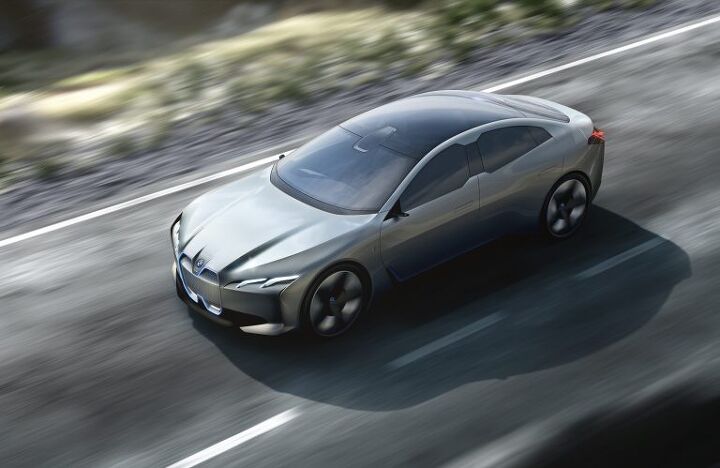


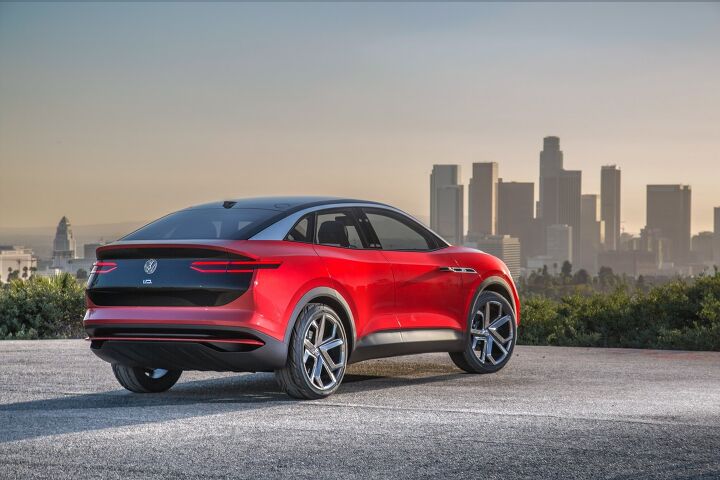










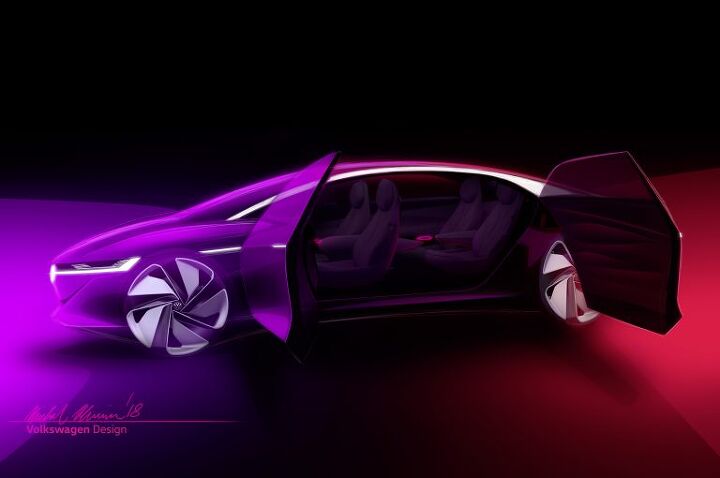
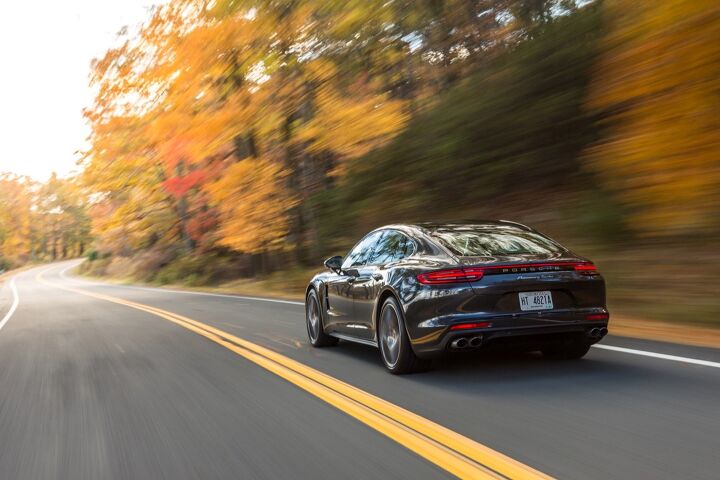



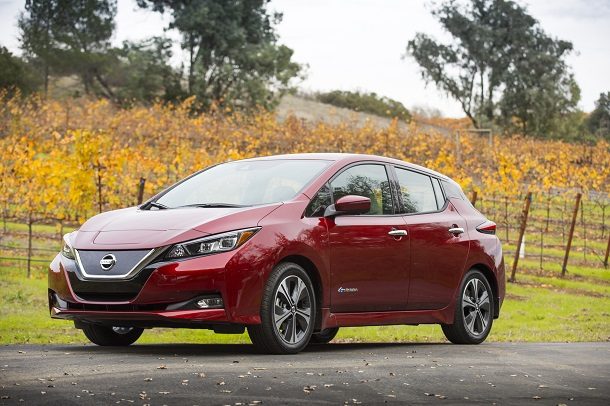


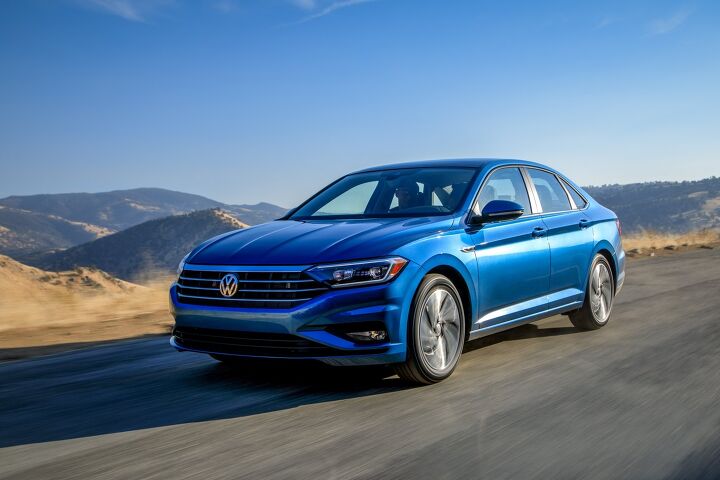




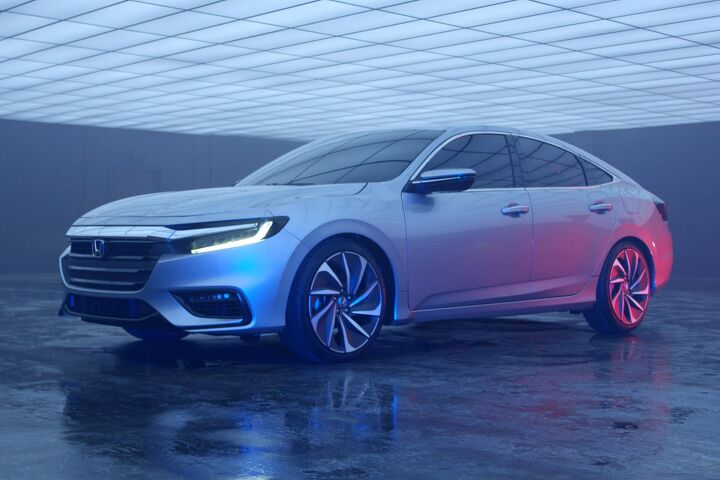



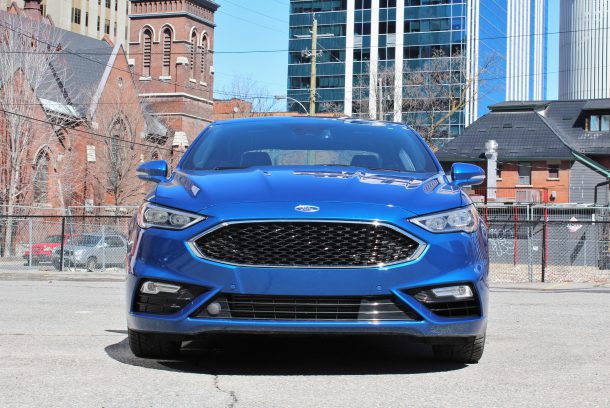


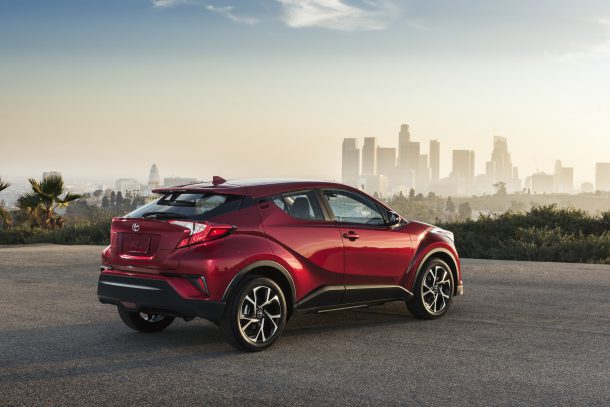
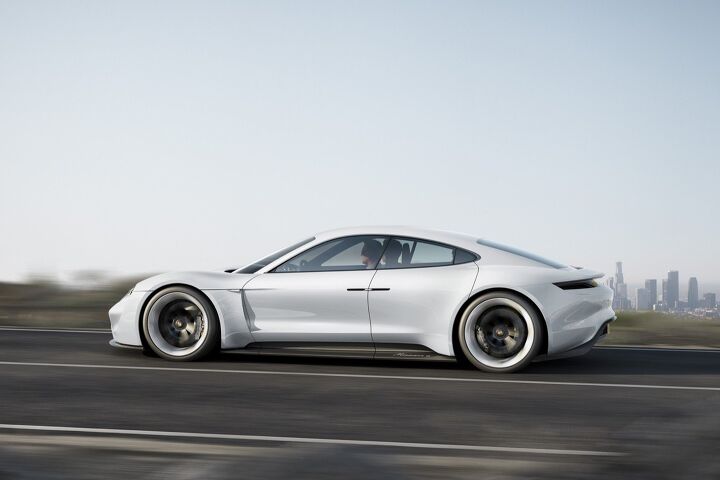






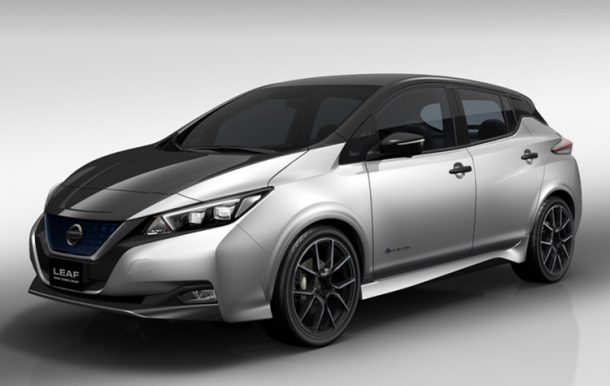
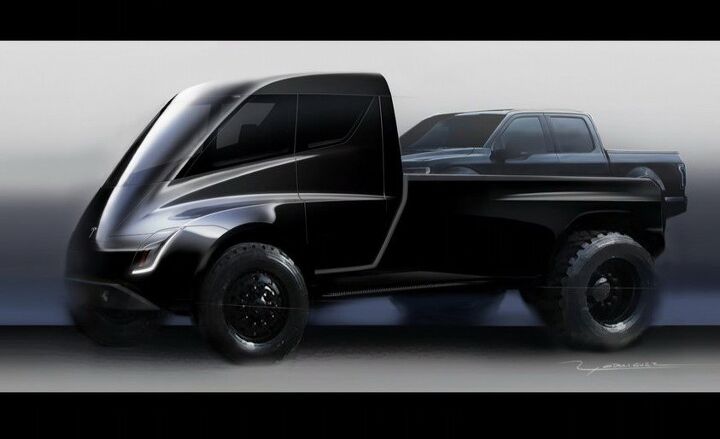


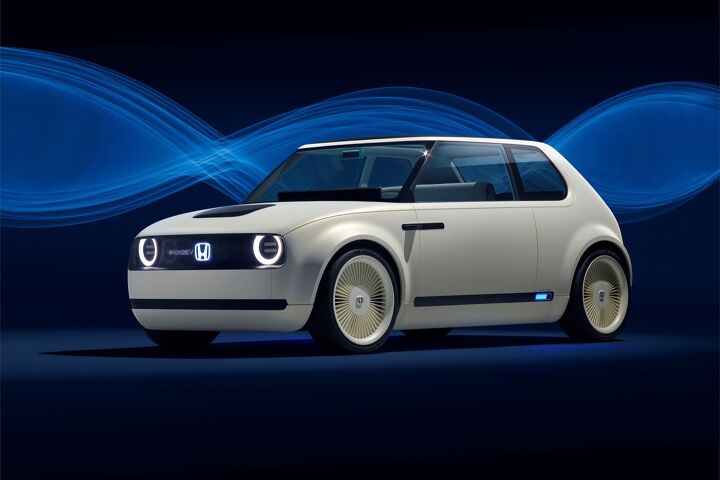

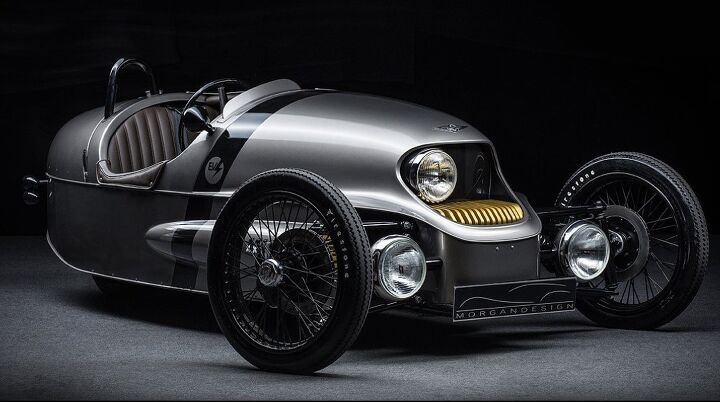
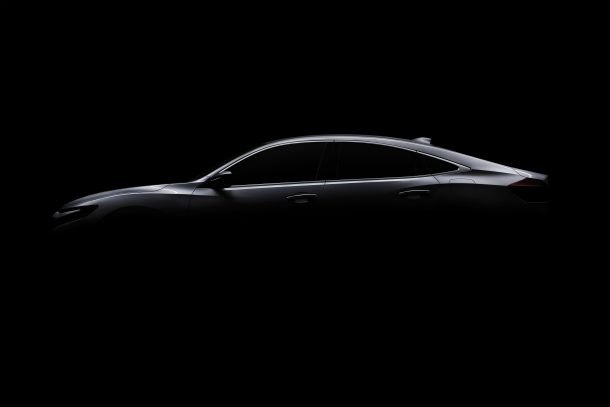

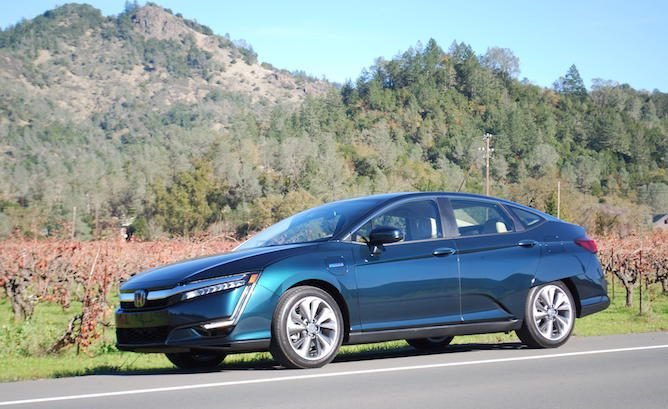

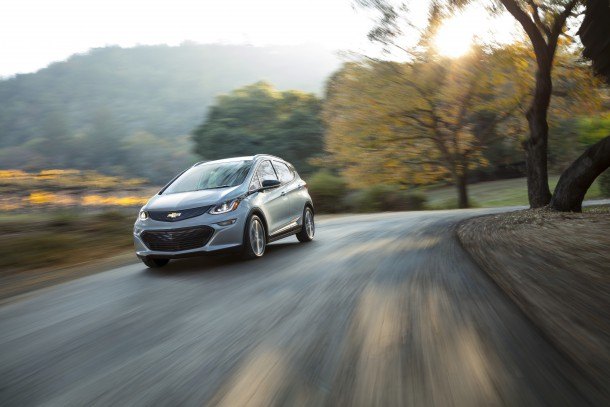


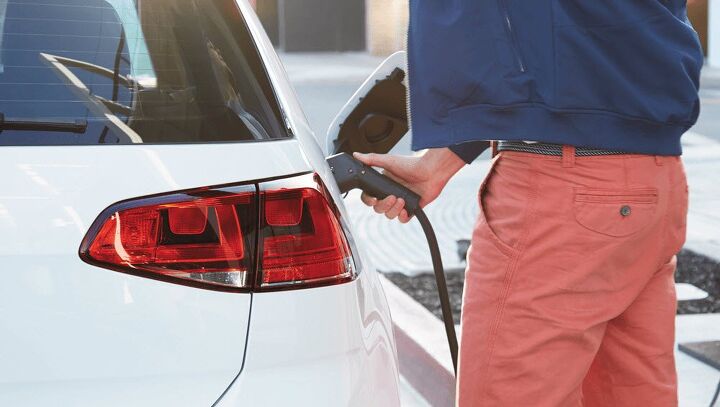














Recent Comments